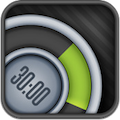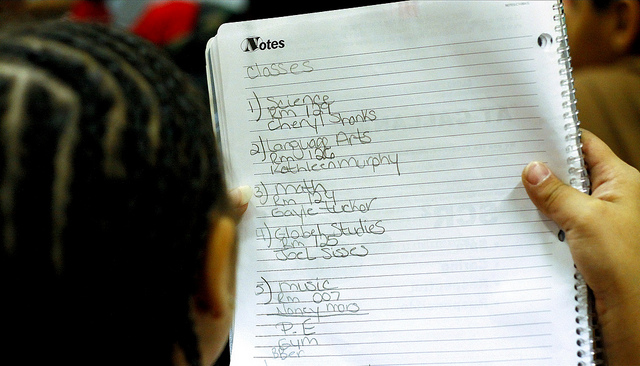“Work smart, not hard.”
We’ve probably all heard this phrase, and that’s because there’s wisdom in it. Working hard isn’t enough if one’s approach to the work is disorganized and inefficient. This is especially important for kids to learn. When children struggle with time management, they have less time to engage in the play activities that are important for growth and development. Some children display persistence while doing homework but still work very slowly because they lack planning, organization, and time management skills. Thankfully, these skills can be taught. In this edition of the LearningWorks for Kids Beyond Games series we suggest strategies to improve efficiency through better time management.
Improving Efficiency
Teach prioritization skills for test and exam taking. Instruct a child directly in test-taking strategies. Teach him to respond to all of the questions to which he knows the answer before spending time on more difficult questions. Help him to construct very brief outlines in response to essay questions. He could learn to maximize the amount of time he will have to complete a test by sitting towards the front of the class, having all materials ready and available upon receiving the test, and using a watch as a timer so that he is aware of how much time he has left to complete the test.
Schedule big tasks during peak energy levels. Make a mental note of your child’s most active time of the day. This can vary greatly in children, some being more energetic before school in the morning and others before bed at night. Help your child develop better time management habits by scheduling homework and other projects and tasks for high-energy hours.
Teach them how to learn. Difficulty with time management can be related to particular “problem” areas for particular children. Kids who tend to process verbal information very slowly may need to be given slow and deliberate directions or hear directions repeated before they can take all the information in and make sense of it. Others may readily understand verbal directions but be slower to produce a completed task through writing, movement, or a verbal response. Keeping your teaching style flexible will also help children gain the self-awareness they need to be proactive learners.
Take exercise breaks to improve time management and efficiency. Most adults have inefficiently spent hours trying to do something and then easily accomplished it after having taken a physical break. A child could benefit from taking 10- to 15-minute exercise breaks that include activities such as running around the house, doing a set of push-ups, or taking the dog out for a short walk. Once he has learned when he needs breaks and can demonstrate that he is using them responsibly by willingly returning to work, his parent could allow him to schedule these interruptions on his own.
Be aware of chronic under-arousal in a child, as it may be a sign of a sluggish cognitive tempo. Observe him to see if he simply approaches everything in a very slow or sluggish fashion or if he seems to be chronically under-aroused. This could be a sign of Attention-Deficit/Hyperactivity Disorder, Inattentive Type or of a sluggish cognitive tempo. Should this be a persistent problem, consult with his pediatrician to explore medical or nutritional issues.
Complementing these core strategies with the use of apps, websites, and other technologies often leads to the best solutions to improve a child’s ability for improving efficiency through better time management. Some of the best tech tools to help a child with improving efficiency include:
 Choiceworks is an app for iOS devices that allows kids to create visual schedules in order to improve time management. Especially helpful for kids on the autism spectrum, Choiceworks not only allows for breakdowns of tasks into steps, but for re-centering when kids feel like they are losing control.
Choiceworks is an app for iOS devices that allows kids to create visual schedules in order to improve time management. Especially helpful for kids on the autism spectrum, Choiceworks not only allows for breakdowns of tasks into steps, but for re-centering when kids feel like they are losing control.
 30/30 is another scheduling app that allows users to break an entire day down into individual tasks, right down to food and social media breaks. With the ability to color-code events and tag them with icons, 30/30 is visually engaging without being distracting, allowing kids to check in and then get back to work.
30/30 is another scheduling app that allows users to break an entire day down into individual tasks, right down to food and social media breaks. With the ability to color-code events and tag them with icons, 30/30 is visually engaging without being distracting, allowing kids to check in and then get back to work.
 For the child who plays video games, time management is a skill they have likely exercised extensively already. Fit It Quick, a Tetris-like puzzle game, can help kids connect in-game time management to real-life time management. Parents can use LW4K’s Playbook to talk to their kids about the ways they use time management to fit pieces together within the time limit and how this relates to completing the real world tasks of a day or week.
For the child who plays video games, time management is a skill they have likely exercised extensively already. Fit It Quick, a Tetris-like puzzle game, can help kids connect in-game time management to real-life time management. Parents can use LW4K’s Playbook to talk to their kids about the ways they use time management to fit pieces together within the time limit and how this relates to completing the real world tasks of a day or week.
Featured image: Flickr user Phil Roeder




